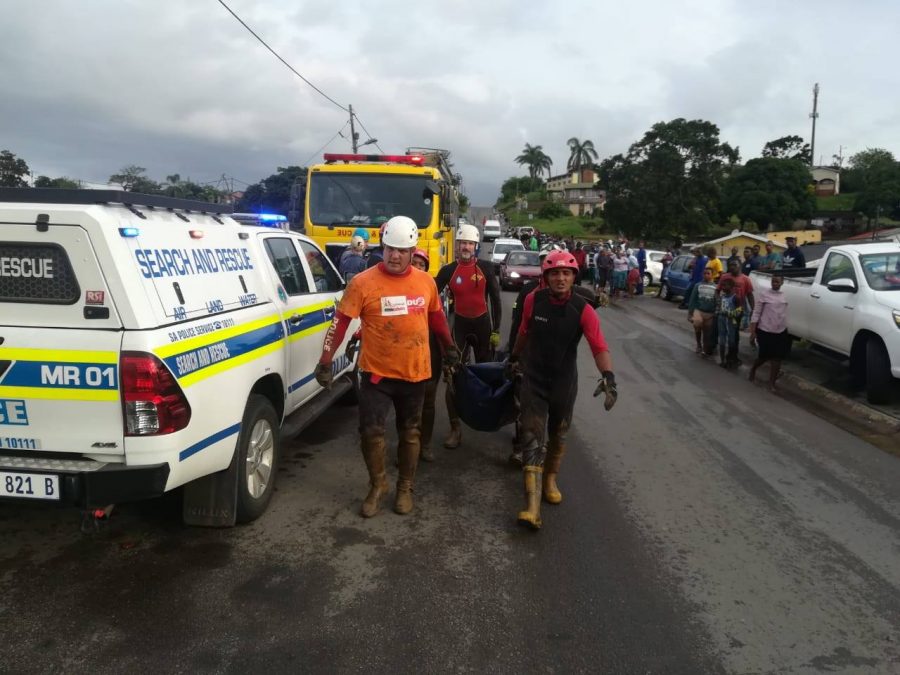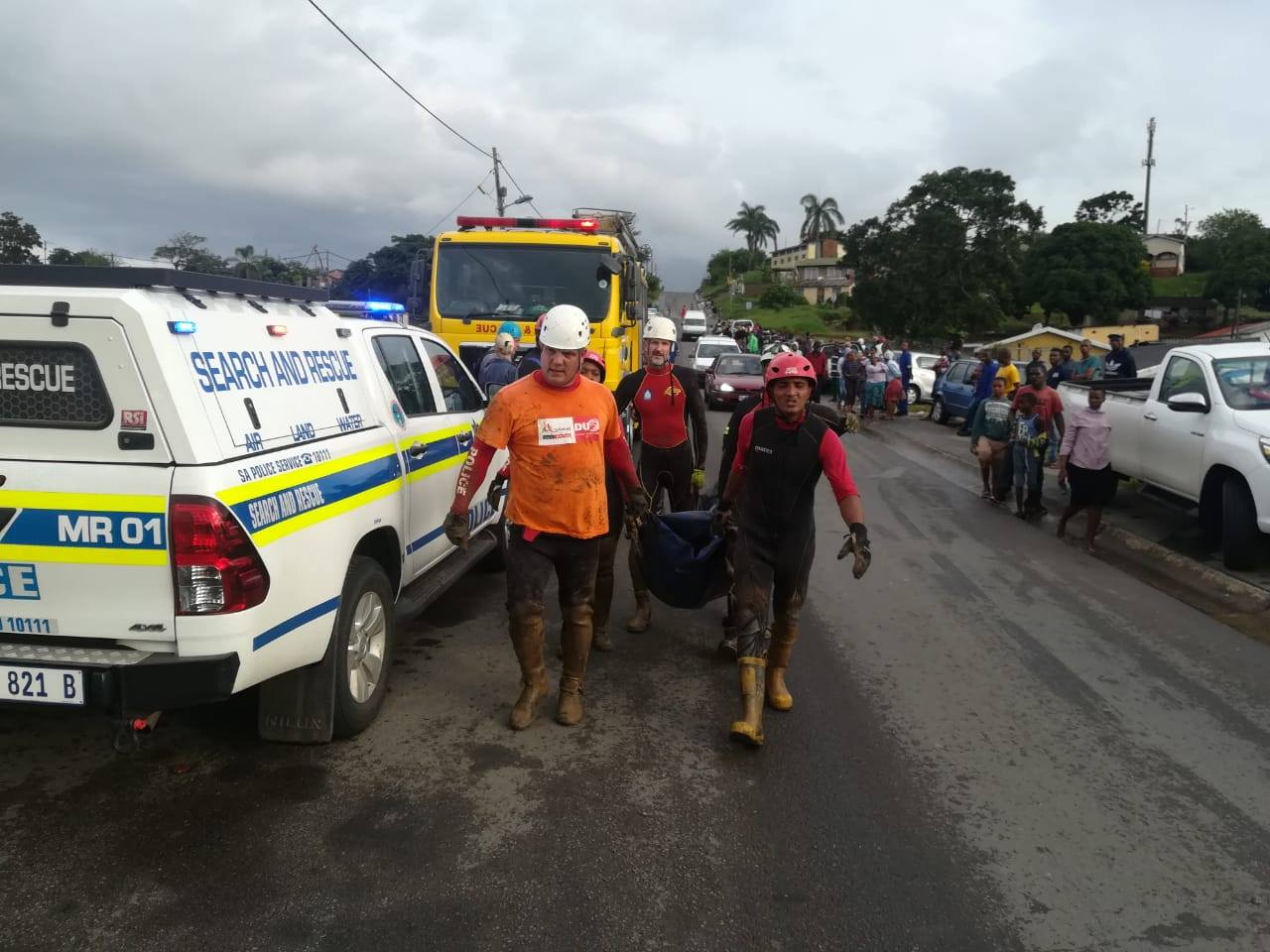
Death Toll Over 70 as Rescuers Fight Against Time to Save Missing People
Rescue workers are in a fight against time to find unaccounted-for people as the death toll from the torrential rains in Durban and along the eastern coast of South Africa exceeds 70 people. Rescuers are still sadly discovering more bodies in areas where mudslides and sinkholes have swallowed homes. KwaZulu-Natal (KZN) province, where most of […]

Rescue workers are in a fight against time to find unaccounted-for people as the death toll from the torrential rains in Durban and along the eastern coast of South Africa exceeds 70 people. Rescuers are still sadly discovering more bodies in areas where mudslides and sinkholes have swallowed homes.



KwaZulu-Natal (KZN) province, where most of the deaths occurred, has heavy rain every year, but they rarely kill so many people in such a short space of time.
The number of people killed was “approaching 70”, Lennox Mabaso, a spokesman for the provincial Cooperative Governance and Traditional Affairs department, said by phone earlier today. By this evening that number has passed 70.
“I don’t recall that in history,” he said, attributing the severity of the storm and its impact on the population to climate change.
Some of the worst-hit areas were informal settlements in KwaZulu-Natal, where people live in flimsy houses without proper foundations or drainage systems.
Sixty-seven people had died in KwaZulu-Natal, and six more in neighbouring Eastern Cape province, authorities said.

A Reuters witness saw rescuers come to collect the body of a woman who had been dug out of the mud by locals.
Mabaso said a more precise death toll would be given later on Thursday.
The SAPeople community has already raised over R25,000 to help the Gift of the Givers support the victims of the flood. (Please donate here.)
Eye witnesses recounted on Wednesday how flood waters and mudslides crashed through houses, many with people inside, and destroyed roads and other infrastructure.
At Westcliff Secondary School, the Gift of the Givers described how rescuers dug out the bodies of the school’s caretaker and family who were killed when a steep bank and wall behind the house collapsed on the home, washing sand into the house and killing all inside.
The rains carved chunks out of hills and roads in the region, with cars, tin roofs and other rubble swept into the deep muddy trenches left behind.


In other places, people buried their dead on muddy hillsides churned up by the storm, marking their resting place with simple wooden crosses.

Vanetia Phakula, a senior forecaster at the South African Weather Service, said the storm was not currently seen as unusual, though the level of rainfall might have been higher than normal.
Over 100 millimeters of rain was recorded as falling at numerous stations within the area between Monday morning and Tuesday, she said.
Phakula said the high death toll could instead be explained by the flooding and mudslides occurring in more highly populated areas.
“Hence the death toll is what it is today,” she said.
While more rain was expected on Thursday it was not expected to be heavy, and the service was forecasting dry weather in most areas by Friday, she added.

“The extent of the damage in certain areas requires the expertise of engineers and others who are qualified to guide the process to repair all that has been damaged and rebuild what is damaged,” said Cooperative Governance and Traditional Affairs (Cogta) Minister Zweli Mkhize.
Mop-up operations in Durban are being intensified.
“Both Minister Mkhize and the President have thanked the disaster personnel from all across the province for their selfless speedy response in assisting communities,” the Cogta Ministry said.
Sources: SANews.gov.za and Reuters (Reporting by Rogan Ward in Durban and Emma Rumney in Johannesburg; Editing by Hugh Lawson/Reuters and Jenni Baxter/SAPeople)
https://twitter.com/simonislive/status/1120566872938831872
https://www.facebook.com/bongi.luluu/posts/10213326266206864
https://www.facebook.com/SAPoliceService/posts/2843904942303096
The Umgeni river in full flood this morning, floating trees snapping under the M4 bridge and the Blue Lagoon Swan boat on its way to the shorebreak #durbanfloods #durbanstorm #durbanrain @News24 @ECR_Newswatch @TimesLIVE pic.twitter.com/MAqWTkGMI8
— Mike Frew (@frewbru) April 23, 2019
Please donate to rescue efforts here.

